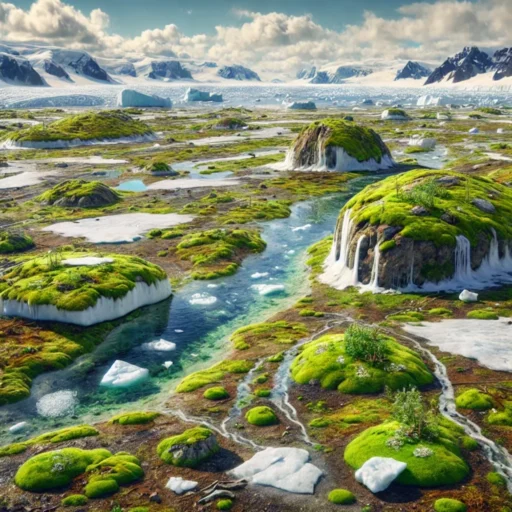
In an ominous sign of global warming, there are reports that Antarctica is turning green dramatically. The new report suggests that the trend has accelerated by more than 30 per cent in recent years. Researchers found that from less than 1 sq km the vegetation cover has increased almost to 12 sq km between 1986 and 2021, which is more than a ten-fold growth across the peninsula. This event has sparked concerns regarding the changing landscape of this vast continent.
Scientists used satellite imagery and data to analyze vegetation levels on the peninsula, which points to the tip of South America which is warming much faster than the global average. According to the study by Exeter and Hertfordshire Universities and a publication by the British Antarctic Survey, plant life, mostly mosses has increased multifold in this harsh environment over the past decades. Environmental Scientist at the University of Exeter, Thomas Roland highlighted that while the landscape is almost entirely snow, the small green patch has grown alarmingly since the mid-1980s. He cited that the effects of anthropogenic climate change have no limits and it has left its mark on even the most isolated, remote and extreme locations like the Antarctic Peninsula.
The coldest place on earth Antarctica, has been recently gripped by some serious heat waves. During the summer, parts of the white continent experienced temperatures up to 50 degrees Fahrenheit above normal from mid-July. In March 2022, temperatures recorded in some parts of the continent were 70 degrees above normal, which is the most extreme temperature variation ever recorded in this continent.
The impact of fossil fuels will have a deteriorating effect on this place and the greening is further likely to accelerate. The greening will further exacerbate the concern of rising temperatures as it would reduce the peninsula’s ability to reflect solar radiation to space as darker surfaces absorb more heat. The more the peninsula greens the more the risk of invasive species threatening the natural flora and fauna. The iconic landscape is fraught with risks that could change it forever.






